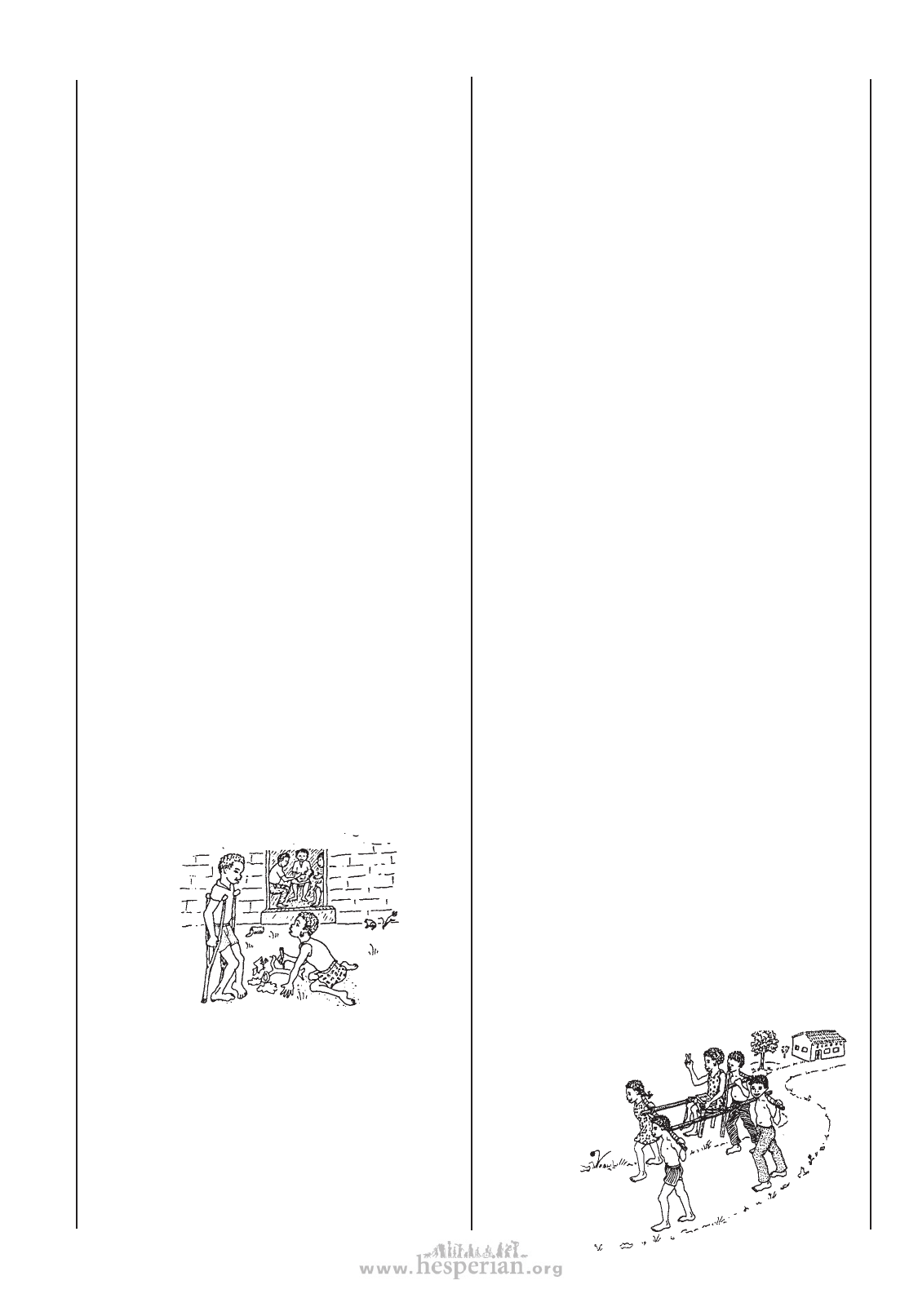
440 chapter 47
turned-in feet and the tips of his crutches. Then she
looked at his knees, which had dark calluses on their
inner sides where they rubbed together when he
walked.
“Why do you walk with those sticks?” she asked.
“It’s the only way I can,” he said. “My legs don’t
like to do what I tell them.”
Julia lifted her head and looked up into Tomás’ face.
Tomás tried to smile, but knew his mouth was twisting
strangely to one side.
“And why do you talk funny?” asked Julia.
“Because my mouth and lips don’t always do what
I want either,” said Tomás. And it seemed he had
even more trouble speaking clearly than usual.
Julia stared at him. “Do you really like my drawing?”
“I do,” said Tomás, glad to change the subject. “You
have a real gift. Real talent. You should study art. I’ll
bet some day you could be a great artist.”
“No,” said Julia, shaking her head. “I’ll never be
anything. I can’t even walk. Look!” She pointed to her
small floppy legs. “They’re even worse than yours!”
“But you draw with your hands, not your feet!”
exclaimed Tomás.
Julia laughed. “You’re funny!” she said. “What’s
your name?”
“Tomás.”
“Mine’s Julia. Do you really think I could be an
artist?—No, you’re only joking. I’ll never be anything.
Everybody knows that!”
“But I’m not joking, Julia,” said Tomás. “I read in
a magazine about an artist who paints birds. People
come from all over the world to buy his pictures.
And you know something, Julia, his arms and legs are
completely paralyzed. He paints holding the brush in
his mouth!”
“How does he get around?” asked Julia.
“I don’t know,” said Tomás. “People help him, I
guess. But he does get around. The magazine said he
has been to several countries!’
Julia said, “Wow! Do you really think I could
become an artist?”
Tomás looked again at the drawings in the dirt—and
truly wished he could draw as well. “I know you
could!” he answered.
“How do I start?” asked Julia, sitting up eagerly.
“First,” said Tomás, “you should probably go to
school!”
“But how?” said Julia, looking at her legs.
“That’s easy,” said Tomás. “All the school children
want to help. But you have to want to go.”
“I... I’m afraid...” said Julia. “Do you go to school,
Tomás?”
“Yes, of course,” he answered.
“Then I want to go, too!”
Inside the house, Tomás’ parents were trying to
convince Julia’s parents of the importance of sending
her to school. They explained how they had had the
same doubts about Tomás, and how much school had
helped him.
“It’s not only what he is learning that’s important,”
said Tomás’ mother, “but what it has done for him
personally. He has more confidence—a whole new
view of himself!”
“And we’ve come to look at him differently, too,”
said Tomás father. “He’s a good student—one of the
leaders in his class!”
Julia’s father coughed. “Even if all you say is true,
Julia doesn’t want to go. She’s afraid. You see, the
same illness affected her...”
His sentence was cut off by Julia, who came
bursting in the back doorway on hands and knees.
“Mama! Papa!” she shouted. “Can I go to school?
Will you let me? Pleeeease?”
Her father’s mouth fell open for a moment. And
then he smiled.
The next day Julia began school. The other children
learned from Tomás that Julia was ready to go, and
they worked hard Sunday evening making a ‘sitting
stretcher’ for her. One of the children had seen a
similar stretcher when an injured man had been
carried down from the high mountains. It was a
simple wooden chair, tied firmly between two poles.
The children finished making it by sunset and the next
morning arrived with it at Julia’s house. Tomás went
with them to give Julia courage. He was so excited
that he fell 3 times!
Julia was so frightened when she saw the children
that she almost decided not to go. But when they
brought her special chair to the door, she lifted
herself onto it with her strong
arms. And before she knew
it, she was on her
way—to school!
Disabled village Children